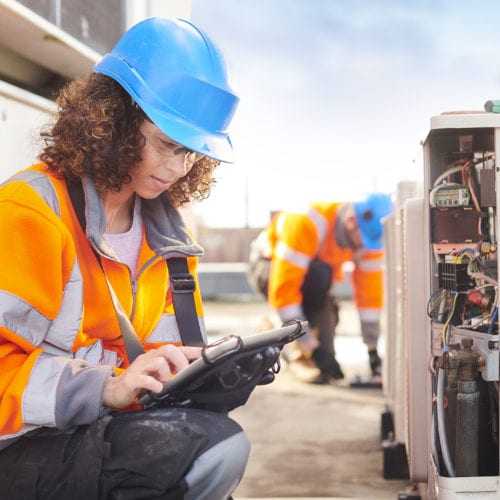Boys in kitchen, making pancakes

Indoor Air Pollution: the Link between Climate and Health
As a global pandemic shines a new light on health, air pollution, and the disproportionate impacts on vulnerable populations, it exposes the need to protect the public from risks both outside and inside the home.
Outdoor air pollution is a serious threat: five out of 10 Americans live in areas with unhealthy air, according to the American Lung Association’s new State of the Air report. But indoors, air pollution is largely unregulated, despite risks associated with common household appliances. For instance, decades of scientific research have shown that gas stoves release toxic pollutants that can damage human health, but governments have done little to educate the public or accelerate the transition to all-electric cooking.
There are clearly climate and economic arguments for electrifying buildings, but there is also a profound health imperative. According to new research from MIT, the combustion emissions from the building sector now contributes to the largest share (37 percent) of premature deaths associated with air pollution, compared to other sectors like transport, industry, and power generation. The opportunity is ripe for lawmakers and regulators to turn their attention to safeguarding public health by reducing building emissions and to focus on creating healthier homes when rebuilding from the current crisis.
A new Rocky Mountain Institute report, published in collaboration with Physicians for Social Responsibility, Mothers Out Front, and Sierra Club, focuses on the impact of gas stoves on indoor air pollution and public health. It synthesizes the last two decades of health research, highlighting eight key findings (previewed below), and providing recommendations for policymakers, individuals, health professionals, and researchers.
- The indoor environment, where we spend 90 percent of our time, can be more polluted than the outdoors. Gas stoves are a primary source of combustion (burning) pollution inside the home. Cooking on gas can spike emissions of nitrogen dioxide and carbon monoxide to levels that would violate outdoor pollutant standards. This finding is underscored by new modeling from researchers at the University of California Los Angeles (UCLA).
- Homes with gas stoves can have nitrogen dioxide concentrations that are 50–400 percent higher than homes with electric stoves. The US Environmental Protection Agency (EPA) recently strengthened its assessment of nitrogen dioxide, finding a causal relationship between short term exposures and respiratory effects.
- Certain populations are more susceptible to the risks of gas stove pollution.
- Children are more vulnerable to air pollution due to several factors including their developing lungs and smaller body size. Children in a home with a gas stove have a 24–42 percent increased risk of having asthma.
- Lower-income populations and communities of color may be disproportionately impacted, with risk factors including increased exposure due to smaller and older homes and higher rates of asthma.
“Like coronavirus, gas stove pollution may affect lower-income families disproportionately,” said Dr. Robert Gould, president of PSR-San Francisco Bay Area and associate adjunct professor at University of California San Francisco School of Medicine. “These communities must be prioritized when designing incentives and policies to support transitions to clean electric alternatives.”
Go Electric in the Kitchen
Air pollution is preventable. If there was ever a doubt, one only needs to read the headlines related to improved air quality in the wake of Covid-19. The path toward recovery must simultaneously boost economic growth and address the indoor and outdoor pollution that impacts public health. The new UCLA report found that in California, if all residential gas appliances were changed to clean electricity, the state could monetize $3.5 billion in health benefits every year.
Electrifying buildings is a key component of local climate and health action, as it reduces both the harmful emissions and health impacts related to buildings, and can be an important job creation tool. Policymakers can act now to rectify the lack of regulation protecting people from gas stove pollution. This will require a collaborative effort from stakeholders and elevated political will from policymakers to set health-based regulation. Action is not unprecedented and can be expanded:
- Canada recently strengthened outdoor nitrogen dioxide standards and indoor guidelines to better protect health. Guidelines can be set by the US EPA and local and state policymakers and air districts to protect the most sensitive populations. This is a critical first step.
- State and local policymakers can provide financial incentives, such as tax credits or rebates, to enable lower-income households to add plug-in induction cooktops or switch to electric. Sacramento Municipal Utility District (SMUD), for instance, is currently offering its customers a $100 to $500 rebate for installing an induction stove.
- The Massachusetts Medical Society recently formally recognized the health risk of gas stoves, becoming the first medical body to do so and committing themselves to educate others about the issue. Health professionals play an important role in raising awareness and encouraging families to minimize risk.
Although everyone deserves to breathe clean air, pollution—indoors and outdoors—does not affect everyone equally. By building back better from this crisis we can create healthier and more resilient buildings. For all.

